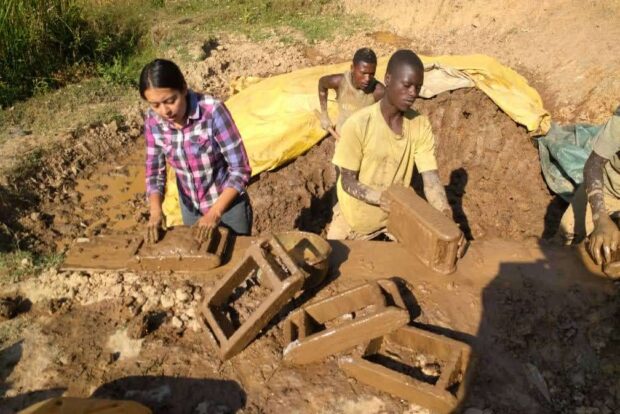Creating Sustainable Educational Outreach Campaigns
October 31, 2022 | Diana Guardado

Sustainable progress is the pursuit of social, environmental, and economic prosperity for our current generation and the rising generation. As I have been conducting research on Lake Bunyonyi, Uganda, I have uncovered the key to creating sustainable, culturally responsive, and equitable strategies that work on adopting the local language, respecting cultures, and cherishing the customs of communities. For instance, while coordinating and conducting stakeholder interviews, focus groups, and surveys, I noticed the participants frowning, fidgeting with their fingers, and desperately looking for an exit. It almost seemed like my questions were causing feelings of discomfort rather than consensus and a collaborative spirit. So I began to work with my team to answer the following questions:
- How does our research project tap into people’s experiences and expertise?
- How do we adjust the language of the interview according to the respondents?
After a few trials and tribulations, we began integrating culturally relevant phrases which are employed in local conversations. In turn, we began receiving stories and detailed encounters from the villagers as they were able to understand and answer our questions. Here are a few adjustments we made to our questionnaires:
| Western Phrases (Culturally Disconnected Phrases) | Local Terms (Culturally Relevant Phrases) |
| Tuition | School Fees |
| Middle School or High School | Primary or Secondary School |
| Studying Class Materials | Revising Subjects |
| At-home chores | Grazing, Gardening, Collecting Water, and/or Molding Bricks |
| COVID-19 | Pandemic or Corona |
The practice of eliciting detailed answers from respondents and securing their trust starts with adjusting the project’s language according to the target audience. As the team at the Hope and Heal Fund will begin a statewide campaign to educate the public on the Gun Violence Restraining Orders law, they will ensure underrepresented communities understand and integrate the teachings into their personal lives. As mentioned in Berkely Media Studies Group’s recent analysis of news coverage, there is “ less Spanish- than English-language news about gun violence, police violence, and gun sales…” which disables Spanish-speaking communities from deploying life-saving tools used to prevent and intervene in a public health crisis (Garcia et al.).
In an effort to construct an innovative, strategic, and high-impact campaign, the team must be able to speak, resonate, and connect with the community. As a result, multilingual outreach projects must be designed by individuals who understand the native language and are able to translate and interpret the context. In this case, the deconstruction of language barriers empowers and incentivizes communities to become active participants and practitioners of the teachings.
As creators and strategizers, we must approach communities by acknowledging, speaking, and interpreting information in their language. Communities will no longer feel hostile toward these state-wide outreach efforts. On the contrary, the integration of culturally relevant phrases and multilingual resources will provide historically marginalized communities with tools to become collaborators of equitable and sustainable solutions.
Diana spent the summer of 2021 as a social media intern with Hope and Heal Fund. This summer, Diana is in Uganda, working as a racial equity and education researcher for the Global Livingston Institute (GLI), a research institute that works on creating equitable and sustainable community development approaches. Diana is a rising senior at Menlo College studying Political Science and Public Policy with a minor in Equity and Justice Studies.
Citation
Garcia, Kim, et al. “Understanding Violence and Prevention during a Pandemic: California News about Guns, Gun Violence, and Firearm Suicide, 2020–2021.” Berkeley Media Studies Group, 7 Oct. 2021.
